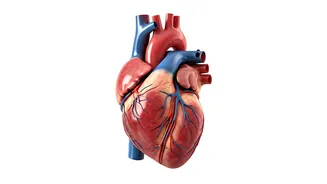Brisk Walking Benefits
Brisk walking is a simple yet powerful exercise for heart health. It is a readily available activity that requires no equipment, making it incredibly accessible.
Whether you choose to walk outdoors in your neighborhood or on a treadmill, the benefits remain the same. Regular brisk walking helps to improve cardiovascular function by increasing heart rate and blood flow. Aim for at least 30 minutes of brisk walking most days of the week to reap the heart-healthy rewards. This routine helps to manage weight, reduce the risk of chronic diseases, and improve overall fitness. Remember to maintain a pace that elevates your heart rate without causing excessive strain, and always listen to your body.
Cycling for Wellness
Cycling, both indoors and outdoors, provides a fantastic cardiovascular workout. This activity is another low-impact option that’s gentle on the joints while effectively elevating your heart rate. Whether you're using a stationary bike at home or exploring scenic routes outdoors, cycling offers a diverse range of fitness levels. The rhythmic motion of cycling improves cardiovascular endurance, strengthening your heart muscle and improving blood circulation. It also aids in burning calories, which can contribute to weight management, which supports overall heart health. Regular cycling helps reduce the risk factors for heart disease and boosts your mood. Start with shorter rides and gradually increase the duration and intensity as your fitness improves.
Embrace the Dance
Dancing is a joyful and effective way to boost heart health. It's a fun and engaging activity that doesn't feel like a workout. Dancing elevates the heart rate and improves cardiovascular fitness, making it beneficial for your heart. Different forms of dance offer a variety of options, from energetic Zumba to more graceful styles like ballroom or classical dance. Regardless of the style you choose, regular dancing helps strengthen your heart, enhance your coordination, and improve flexibility. Dancing is a great way to relieve stress and boost your mood, which indirectly benefits your heart health. Incorporating dance into your routine can make exercise enjoyable and sustainable, helping you stay consistent with your heart-healthy goals.
Swimming or Water
Swimming and water aerobics are excellent low-impact exercises that are easy on the joints, making them suitable for people of all ages and fitness levels. The buoyancy of water reduces the stress on your body, allowing for a thorough workout without the impact of land-based exercises. Swimming improves cardiovascular health by increasing heart rate and enhancing blood flow. Water aerobics provides similar benefits, often incorporating a variety of movements to target different muscle groups. Both activities also enhance muscle strength and endurance. Regular swimming or water aerobics can help improve your overall fitness level and reduce the risk of heart disease. Consider water-based activities as a great option for a full-body workout that's gentle on your joints.
Tai Chi and Qigong
Tai Chi and Qigong are gentle yet powerful exercises known for their calming effects on the mind and body, which positively impacts heart health. These practices involve slow, controlled movements and deep breathing, which help to reduce stress and lower blood pressure. Both Tai Chi and Qigong promote cardiovascular health by improving circulation and enhancing flexibility. They are suitable for people of all ages and fitness levels, including those with mobility limitations. Consistent practice can improve balance, coordination, and overall well-being. By integrating Tai Chi or Qigong into your routine, you can create a calming environment to benefit your heart and reduce the mental stress that could negatively affect cardiovascular health.
Yoga's Heart Benefits
Yoga, even in its gentlest forms, offers significant benefits for heart health. It combines physical postures, breathing exercises, and meditation to improve overall well-being. Yoga helps reduce stress, lower blood pressure, and improve circulation. By practicing regularly, you can improve flexibility, muscle strength, and balance, which are all important for cardiovascular health. Yoga also promotes relaxation and mental clarity. It can lower the levels of stress hormones, which contribute to a healthy heart. Many yoga styles are low-impact, making them accessible to individuals of various fitness levels and ages. Integrating yoga into your routine can be a peaceful way to maintain a healthy heart and improve overall well-being.
Consistency is Key
Staying consistent with any exercise routine is vital for reaping the benefits for your heart. Whether you choose brisk walking, cycling, dancing, swimming, Tai Chi, Qigong, or yoga, making these activities a regular part of your life is crucial. Creating a sustainable plan helps prevent burnout and ensures long-term success. Start gradually and gradually increase the intensity and duration of your workouts as your fitness level improves. Aim for consistency by setting realistic goals and scheduling exercise sessions into your week. This could mean walking for 30 minutes daily or practicing yoga three times a week. The key is to find activities you enjoy, so they become a part of your lifestyle. Remember to listen to your body, rest when needed, and celebrate your progress along the way. Stay committed to your heart-healthy journey, and it will pay off.













